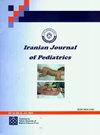COVID-19大流行期间儿科和成人神经内科住院医师的虚拟和真人脑电图(EEG)培训
IF 0.4
4区 医学
Q4 PEDIATRICS
引用次数: 0
摘要
背景:在2019冠状病毒病大流行期间,教育项目越来越依赖虚拟方法。目的:在本研究中,我们比较了面对面和虚拟脑电图(EEG)培训对儿科和成人神经内科住院医师知识的影响。方法:研究参与者包括30名儿科和成人神经内科住院医师,他们是通过虚拟网络在全国范围内招募的。他们被随机分为两组,分别接受面对面和虚拟教育。在第一次研讨会之前,参与者完成了一个包含19个知识相关问题的预测试。开展了两次以脑电图良性变异为重点的互动培训,包括两次面向8名住院医生的现场培训和两次面向22名住院医生的在线培训。每次会议持续一小时,每两周举行一次。在第二次会议之后,参与者被要求完成一个由24个问题(与前测试相同)和5个与研讨会满意度相关的问题组成的后测试。结果:总体而言,面对面和虚拟研讨会后的平均考试成绩显著高于所有教育水平的考试前得分。工作坊结束后,面对面小组和虚拟小组在知识方面的平均得分差异相似,没有统计学上的显著差异。大约90%的参与者认为工作坊对他们的日常练习有益。结论:鉴于面对面培训和虚拟培训在提高参与者的知识和满意度方面没有显著差异,我们建议将虚拟脑电图培训纳入儿科和成人神经内科住院医师的教育方案中。然而,需要更大样本量的研究来进一步验证这些发现。本文章由计算机程序翻译,如有差异,请以英文原文为准。
Virtual and In-person Electroencephalography (EEG) Training among Pediatric and Adult Neurology Residents during the COVID-19 Pandemic
Background: During the COVID-19 pandemic, educational programs have increasingly relied on virtual methods. Objectives: In this study, we compared the effects of in-person and virtual electroencephalography (EEG) training on the knowledge of pediatric and adult neurology residents. Methods: The study participants consisted of 30 pediatric and adult neurology residents who were recruited nationwide via a virtual network. They were randomly divided into two groups for in-person and virtual education, respectively. Prior to the first workshop session, participants completed a pre-test comprising 19 knowledge-related questions. Two interactive training sessions focusing on benign variants in EEG were conducted, including two in-person workshops for eight residents and two online workshops for 22 residents. Each session lasted one hour, with one held every two weeks. After the second session, participants were asked to complete a post-test consisting of 24 questions (identical to the pre-test) and five workshop satisfaction-related questions. Results: Overall, the mean exam score after both the in-person and virtual workshops was significantly higher than the pretest score across all educational levels. The mean score differences in knowledge between the in-person and virtual groups after the workshop were similar, with no statistically significant difference. Approximately 90% of the participants believed that the workshop would be beneficial for their daily practice. Conclusions: Given the absence of a significant difference between in-person and virtual training methods in improving participants' knowledge and satisfaction with both approaches, we recommend integrating virtual EEG training into the educational protocol for pediatric and adult neurology residents. Nonetheless, larger sample size studies are required to further validate these findings.
求助全文
通过发布文献求助,成功后即可免费获取论文全文。
去求助
来源期刊
CiteScore
0.90
自引率
20.00%
发文量
75
审稿时长
6-12 weeks
期刊介绍:
Iranian Journal of Pediatrics (Iran J Pediatr) is a peer-reviewed medical publication. The purpose of Iran J Pediatr is to increase knowledge, stimulate research in all fields of Pediatrics, and promote better management of pediatric patients. To achieve the goals, the journal publishes basic, biomedical, and clinical investigations on prevalent diseases relevant to pediatrics. The acceptance criteria for all papers are the quality and originality of the research and their significance to our readership. Except where otherwise stated, manuscripts are peer-reviewed by minimum three anonymous reviewers. The Editorial Board reserves the right to refuse any material for publication and advises that authors should retain copies of submitted manuscripts and correspondence as the material cannot be returned. Final acceptance or rejection rests with the Editors.

 求助内容:
求助内容: 应助结果提醒方式:
应助结果提醒方式:


